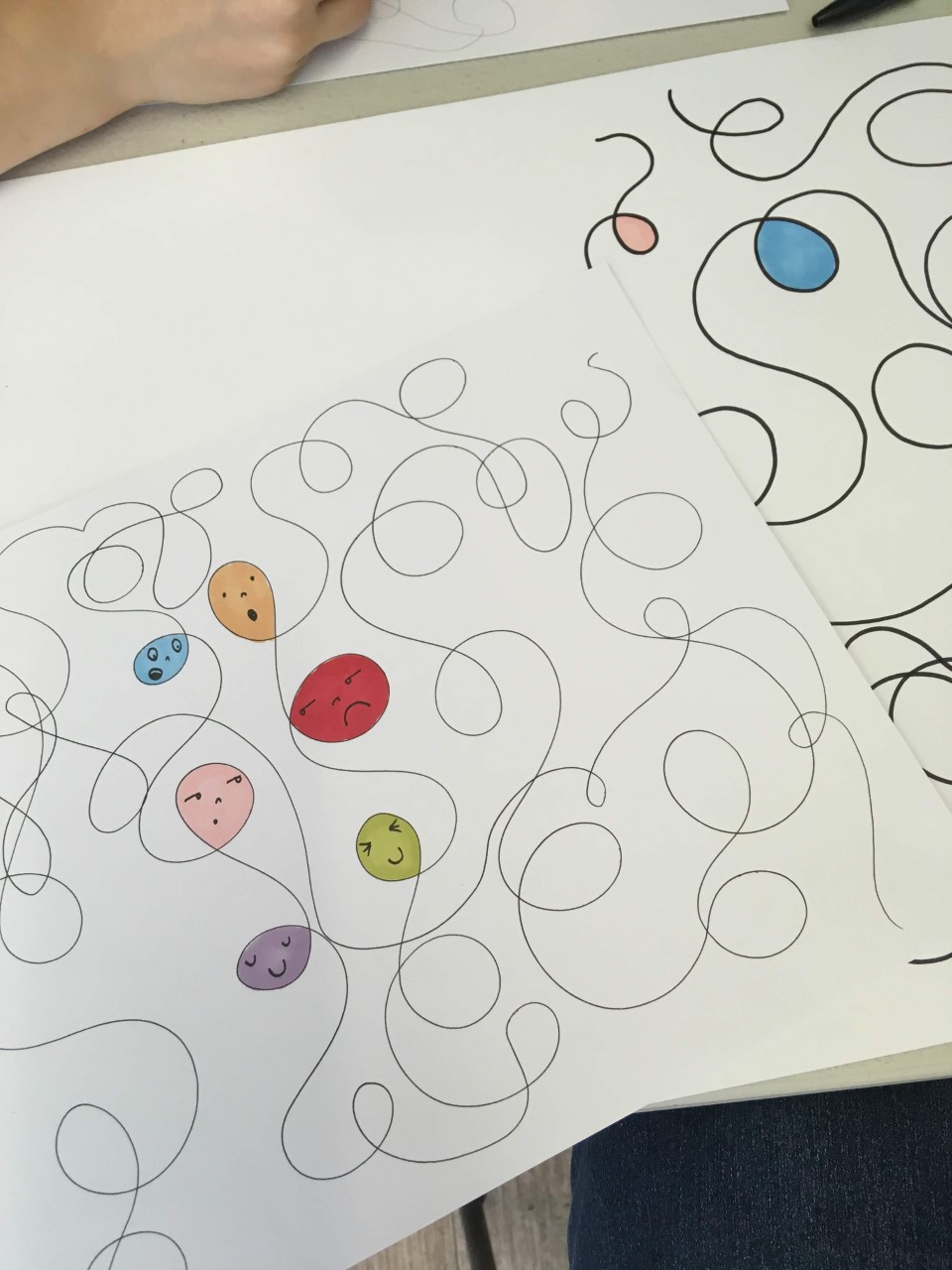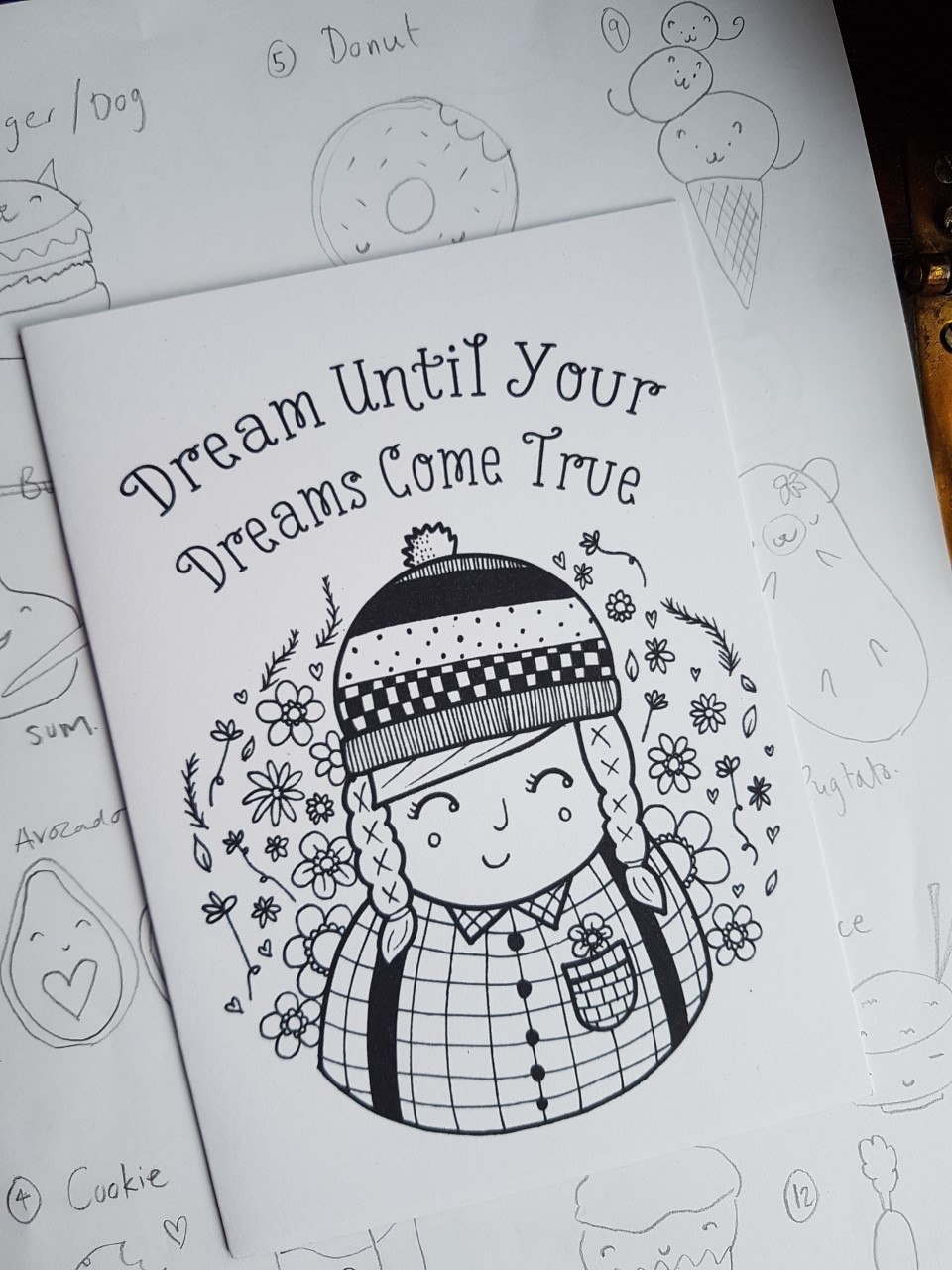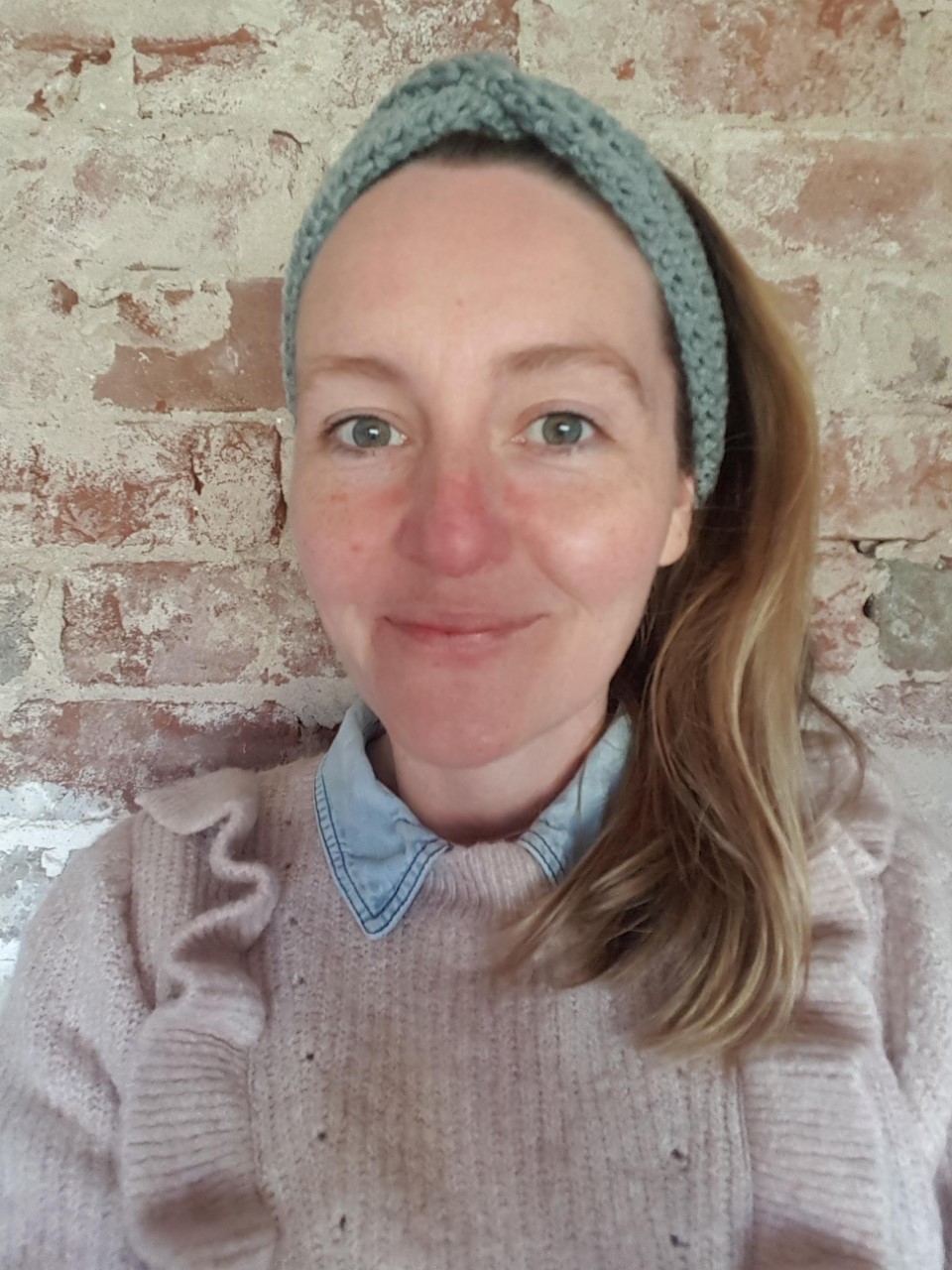Looking for an alternative to meditation? Mindful drawing is perfect for people who struggle to sit still and are looking for a new, creative hobby.
Welcome to The Curiosity Academy, Stylist’s new learning hub where you can access workshops, how-to guides, new research and learn the most up-to-date skills from the UK’s most in-the-know people.
Meditation can be a great tool to help us relax but sitting down with just your thoughts for company can be extremely. However, becoming more mindful of ourselves and the people around us is an important part of looking after our mental health, so finding different ways to practise mindfulness that work for you can be beneficial.
Mindful drawing has emerged as an alternative to classic meditation in recent years, with adult colouring books and life drawing classes gaining popularity. Even if you think you’re bad at drawing, it might be something you find relaxing now, particularly as the whole point of mindful drawing is to remove the pressure that often comes with creating art.
You may also like
Mindfulness alternatives: how to find your inner silence
“You don’t have to consider yourself to be a good drawer to draw mindfully,” says Fiona Meakin, an artist based in Manchester who runs mindful drawing classes for children and adults. “It helps you get into a mindful flow, similar to the flow people can get into when they’re meditating, so it can be a really helpful tool to help you relax and look after your mental health.”
Mindful drawing not only helps you to take some time for yourself but it’s also a creative act. “It helps you reclaim your childlike self. Kids love to draw and it’s one of the first things they can do when they pick up a pen, so try to channel that,” Fiona says.
Mindful drawing is not totally dissimilar to conventional drawing, but there are certain things you can prioritise and focus on to make it a mindful experience. Here, Fiona shares her advice on how to get started with it.
Become aware of your body
Fiona encourages her students to think about their posture and become aware of their different body parts before beginning their mindful drawing practice. “Just like in yoga, it’s beneficial to think about your posture and your breathing,” Fiona says.
To start, make sure your feet are planted firmly on the ground and try to relax your shoulders. You could even do a body scan, tensing and relaxing different parts of your body, to make sure you feel relaxed. “It’s also a good idea to do some breathing practices before beginning to try and let go of any tension you might be holding,” Fiona suggests.


Create a relaxing environment
One of the best things about mindful drawing is that it’s really accessible and requires very little equipment. In fact, according to Fiona, all you really need is a piece of paper and a pencil. If it’s something you enjoy, you could also invest in a sketchbook and some different coloured pens or pencils.
Fiona stresses the importance of creating a relaxing environment for mindful drawing. This doesn’t mean you need a dedicated room or space but adapting your environment to make it as relaxing as possible. “Put on some music you like and clear the space. You can also light a candle or bring anything else into the room that might relax you,” Fiona says.
A blank page often feels scary so scribbling will help you get over this fear
Start by scribbling
“I always encourage people to start their mindful drawing sessions by scribbling as this can let go of a lot of tension,” Fiona says. Take five to ten minutes to scribble whatever you’d like. This will stop you from associating drawing with creating a perfect art work. “A blank page often feels scary so scribbling will help you get over this fear,” Fiona adds.
“If you feel stressed or angry, place that energy onto your scribbles. Or if you feel sad or confused, your scribbling might be more of a process of trying to figure your emotions out,” Fiona says. Try not to plan how you want your scribbles to look. Instead, simply let your hand guide you.
You may also like
Art therapy techniques you can try at home to look after your mental health
Draw intuitively
The subject of your mindful drawing practice is totally down to you and the way you’re feeling. “To start, ask yourself how you want to feel by the end of your session and create an affirmation to reflect that,” Fiona says. You can either write your affirmation down on your paper or think about it while drawing.
From there, you can draw totally intuitively by drawing free-hand and perhaps coming up with an abstract design. However, if you’re a beginner, Fiona says that this might be difficult or intimidating so it can be a good idea to go in with an idea of what you might like to draw. “Something simple like flowers is always good,” Fiona says, adding that you can even copy another photo or drawing if that helps to boost your confidence.
“Don’t worry about getting it perfect. Focus on the simple shapes you’re trying to create,” Fiona says. She recommends spending no more than an hour on your mindful drawing practice, as spending any longer might encourage perfectionist habits. “The great thing about mindful drawing is that it works even if you only have five or ten minutes,” she adds.
Don’t erase your work
The most important thing about mindful drawing is that you don’t get upset or annoyed about how your drawing looks. “If you do start to get stressed about how it looks, leave that drawing there and start a new one or take a break,” Fiona says.
“Try not to rip pages out or rub your drawings out,” she continues. “Don’t overthink your drawings and don’t worry if you don’t like how they look.” Accepting that the drawings you don’t like don’t matter will help you reframe how you deal with stress in your regular life. Fiona says that coming back to your drawings at a later date, especially the ones you didn’t initially like, can be therapeutic.
You can find more expert tips and guides on The Curiosity Academy’s Instagram page.
-
Fiona Meakin, artist and mindful drawing teacher

Fiona runs online mindful drawing sessions. Fiona teaches mindful drawing classes to children and adults. She has a master’s degree from Wimbledon School of Art and she creates character-led illustrations and surface pattern designs from her studio in Greater Manchester.
Images: Fiona Meakin, Getty
Source: Read Full Article
